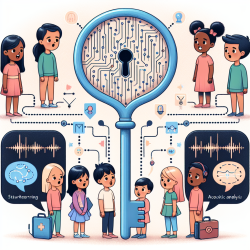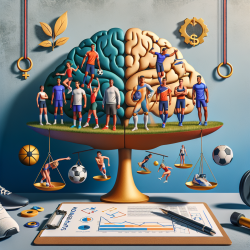In the realm of speech therapy, particularly for children, innovative approaches are always welcomed to enhance outcomes. One such promising avenue is the application of machine learning in acoustic analysis, as demonstrated by the recent study titled Acoustic analysis in stuttering: a machine-learning study. This research offers valuable insights into the potential of artificial intelligence to improve the diagnosis and management of stuttering.
Key Findings from the Study
The study utilized a support vector machine (SVM) classifier to analyze audio recordings from individuals who stutter (PWS) and controls. The results were remarkable:
- The machine-learning algorithm achieved an accuracy of 88% in distinguishing between PWS and controls.
- Physiological aging significantly influenced stuttering, with a classification accuracy of 92% when differentiating between children and younger adults with stuttering.
- The diagnostic accuracy was consistent across different speech tasks, including sustained vowel emission and sentence reading.
Implications for Practitioners
For speech-language pathologists, these findings underscore the potential of integrating machine learning into clinical practice. Here's how you can leverage this technology:
- Objective Assessment: Machine learning can provide an objective measure of stuttering severity, reducing the reliance on subjective clinical scales.
- Age-Specific Analysis: Understanding how stuttering changes with age can help tailor interventions more effectively for different age groups.
- Consistency Across Tasks: The algorithm's high accuracy across various speech tasks means it can be applied in diverse clinical scenarios, from initial diagnosis to ongoing monitoring.
- Telemedicine Applications: The study demonstrated the feasibility of using smartphone recordings, paving the way for remote assessments and teletherapy.
Encouraging Further Research
While the study's findings are promising, they also highlight the need for further research. Practitioners are encouraged to explore the following areas:
- Broader Datasets: Expanding the dataset to include more diverse populations can help refine the algorithm and improve its generalizability.
- Longitudinal Studies: Long-term studies can provide insights into how stuttering evolves over time and how interventions can be adjusted accordingly.
- Integration with Other Technologies: Combining machine learning with neuroimaging and neurophysiological techniques could offer a deeper understanding of the neural mechanisms underlying stuttering.
Conclusion
The integration of machine learning in acoustic analysis represents a significant advancement in the objective assessment and management of stuttering. By embracing these technological innovations, practitioners can enhance the accuracy of diagnoses, tailor interventions more effectively, and ultimately, improve outcomes for children who stutter.
To read the original research paper, please follow this link: Acoustic analysis in stuttering: a machine-learning study.










